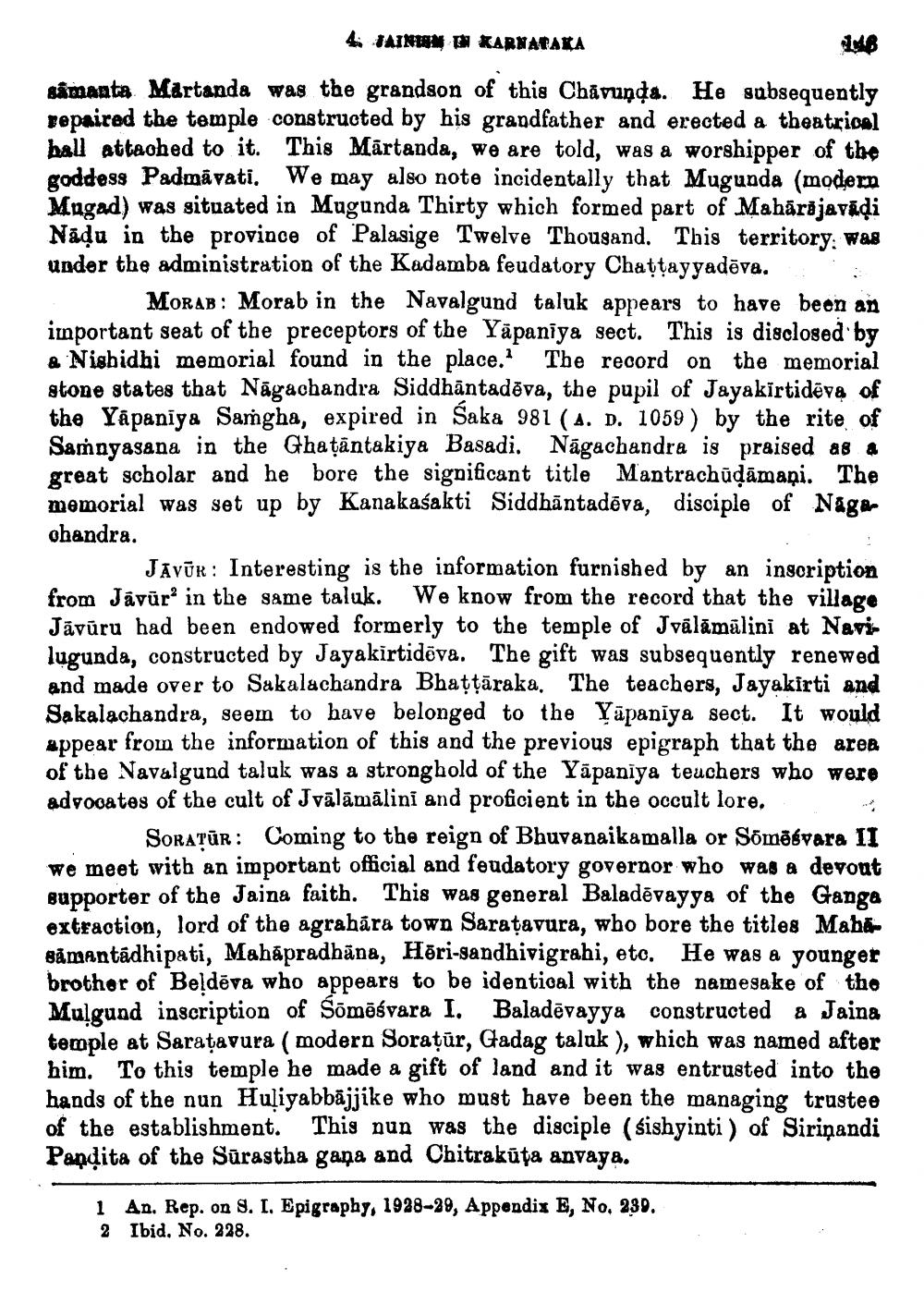________________
Hi JAININEN KARNATAKA
samanta Martanda was the grandson of this Chāvunda. He subsequently repaired the temple constructed by his grandfather and erected a theatrical hall attached to it. This Mārtanda, we are told, was a worshipper of the goddess Padmavati. We may also note incidentally that Mugunda (modern Mugad) was situated in Mugunda Thirty which formed part of Mahārājavādi Nādu in the province of Palasige Twelve Thousand. This territory: was under the administration of the Kadamba feudatory Chattayyadēva.
MORAB: Morab in the Navalgund taluk appears to have been an important seat of the preceptors of the Yāpaniya sect. This is disclosed by a Nisbidhi memorial found in the place. The record on the memorial stone states that Nāgachandra Siddhāntadēva, the pupil of Jayakīrtidēva of the Yāpaniya Samgha, expired in Saka 981 (A. D. 1059 ) by the rite of Samnyasana in the Ghațântakiya Basadi. Nāgachandra is praised as a great scholar and he bore the significant title Mantrachūdāmaņi. The memorial was set up by Kanakaśakti Siddhāntadēva, disciple of Nagar chandra.
JĀVŪR: Interesting is the information furnished by an inscription from Jāvūro in the same taluk. We know from the record that the village Jāvūru had been endowed formerly to the temple of Jvālāmālini at Navilugunda, constructed by Jayakirtidēva. The gift was subsequently renewed and made over to Sakalachandra Bhattāraka. The teachers, Jayakirti and Sakalachandra, seem to have belonged to the Yāpanīya sect. It would appear from the information of this and the previous epigraph that the area of the Navalgund taluk was a stronghold of the Yāpaniya teuchers who were advocates of the cult of Jvālāmālini and proficient in the occult lore.
Soratūr: Coming to the reign of Bhuvanaikamalla or Sõmēsvara II we meet with an important official and feudatory governor who was a devout supporter of the Jaina faith. This was general Baladēvayya of the Ganga extraction, lord of the agrahāra town Saraţavura, who bore the titles Maha samantadhipati, Mahāpradbāna, Hõri-sandhivigrahi, eto. He was a younger brother of Beldēva who appears to be identical with the namesake of the Mulgund inscription of Somāśvara I. Baladēvayya constructed a Jaina temple at Saraţavura (modern Sorațūr, Gadag taluk ), which was named after him. To this temple he made a gift of land and it was entrusted into the hands of the nun Huliyabbājjike who must have been the managing trustee of the establishment. This nun was the disciple (sishyinti ) of Siriņandi Pandita of the Sūrastha gana and Chitrakūta anvaya.
1 An. Rep. on S. I. Epigraphy, 1928–29, Appendix E, No. 239. 2 Ibid. No. 228.




